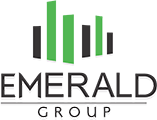In the world of construction contracting, the term “indirect costs” is very well understood. Things can get somehow confusing when the cost estimate needs to include the project capital costs. Partly because there are two different types of indirect costs included in a capital cost estimate: the contractor’s indirect costs, which are part of construction costs, and the project’s indirect costs.
The experienced cost estimator is already very familiar with indirect costs and how to allocate them to each project. You might not find this article very informative if you are one of these professionals. But, if you do not understand indirect cost types and how they apply to construction costs and capital cost estimating, please keep reading.
A capital cost estimate is made up of direct and indirect project costs.
1 Project Direct Cost
The project’s direct costs, also referred to as construction costs, include the following:
1.1 Construction Direct Costs and
1.2 Construction Indirect Costs
Under the construction indirect costs category, we have project overhead and general overhead.
1.2.1 Project overhead costs
These costs could be defined as all costs incurred by the contractor associated with the delivery of the project and which cannot be attributed to any individual construction activity. The project overhead costs are only those costs associated with a particular project. Each project is different regarding requirements of indirect costs, and it can also vary from contractor to contractor to some degree. The best way to identify the project’s indirect costs is to review the general requirements and special provisions requirements in the project specifications.
1.2.1.1 General requirements
The costs included in this group are the following:
- Mobilization/demobilization
- Project management and supervision
- Site vehicles
- Travel and accommodation expenses
- Quality assurance and control
- Safety requirements
- Vehicular access and parking
- Temporary construction
- Construction aids
- Temporary utilities
- Construction facilities
- Temporary barriers and enclosures
- Temporary controls
- Construction survey
- Support and maintenance equipment
- Cleaning and waste management
- Starting and adjusting
- Insurance and bonding
1.2.1.2 Special provisions:
As required and specific to each project. Special provisions are included in the project documentation with the purpose of addressing any requirements not included in general requirements or amending existing ones.
1.2.2 General overhead costs
The contractor’s cost of doing business is included in this category. While not all contractors choose to charge general overhead to a project, some do. Most common is that the general overhead is included in gross profit. The following are the most common costs that fall into this category:
- General office expenses: Lease or rent, insurance, office supplies, utilities, furniture, taxes
- Staff salaries
- Travel, advertising, marketing, legal fees, professional services, memberships, donations, etc.
Depending on the work breakdown structure of the capital cost estimate and the cost estimating methodology used, the contractor’s indirect costs are not always broken out; they are rolled up within the unit/assembly unit rate.
1.3 Contractor profit
2 Project Indirect Cost
The list below is not intended to be the most complete. The project indirect costs included in a capital cost estimate are subject to owner requirements of inclusions/exclusions.
- Development costs
- Engineering and consulting
- Construction/project management
- Permitting and regulatory
- Land acquisition
- Construction insurance and project security bonds
- Campsites
- Owner’s project management and overhead
- Temporary site infrastructure, above and beyond what is already included in the direct costs
- Commissioning and start-up
- Financing costs
- Import taxes and duties
- Freight (for owner’s supplied equipment, if any)
- Escalation
- Contingency
- Taxes
All of the above information is based on my personal experience in the practice of cost estimating. If you have any comments, I would like to know your opinion. Please use the comments section below. If you found this article useful, please share it with others. Also, if you have any questions, please visit Q&A Forum page on the site’s main menu at the top of the page.






4 Responses
Hi Doina, please provide examples of starting and adjusting costs, as well as development costs. Are these covered in other cost elements, or are they intended to cover miscellaneous costs. Thx DJ
Hi Dave, would you please give me an example of what do you mean by starting and adjusting costs? Regarding the development costs, I have seen that such costs are included separate. Cheers, Doina
Hi Doina, I’m only asking for clarification in these two indirect costs which you have listed (starting and adjusting, as well as development costs). Could they be reflected in some of the other indirect costs you have listed, please provide specific examples.
Regards,
DJ
Hi Dave,
I understand your question now. The starting and adjusting costs I am referring to in my article are the “mechanical readiness” related costs. Or, to be more clear, they are all the costs related to permanent equipment and systems starting and adjusting. This is the step also called “pre-commissioning”. These costs are included in the construction costs.
Regarding the development costs, in this category we usually include all costs for items outside of battery limit of the project (access roads to site for example). Also, we might include costs related to market research, development permit, etc. These costs are usually outside of the scope of cost estimating for a capital project, and they are provided by the project owner. I hope this answers your question. Regards, Doina